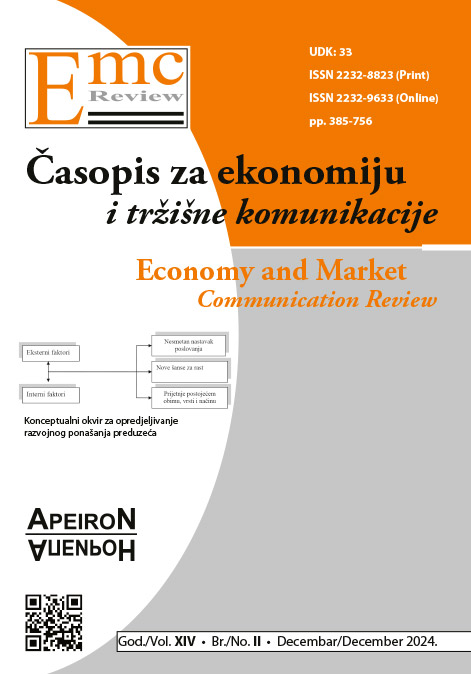CRIMINAL OFFENSES AGAINST THE ENVIRONMENT IN THE EUROPEAN UNION, THREAT TO SURVIVAL, AND RISK FOR THE COMPANY AND MANAGEMENT
DOI:
https://doi.org/10.7251/EMC2402721MKeywords:
environment, risk, criminal acts, criminalityAbstract
World population growth, economic development, globalization, and industrialization, the race for capital, especially in the last 100 years, have caused numerous benefits to the world’s population. But they have also caused many problems which were previously unknown. In the context of this paper, the primary focus is on the pollution of the atmosphere, hydrosphere, and biosphere and the destruction of plant and animal life. The latter affected the health and the survival of people by breaking numerous food chains in nature. The goal of those who are trying to prevent the negative effects is different from the goal of those who wish to acquire capital. Criminal offenses against the environment are among the most profitable organized crimes in the world. The latter presents the third most widespread criminal activity, with an annual increase of 3-5%. It has alarmingly reached 110 to 280 billion dollars in damage. Improper waste collection, waste transport, and disposal, illegal emissions, or release of substances into the atmosphere are some of the crimes that are annually increasing, along with the constant need to monitor the situation and pass regulations to prevent and suppress these occurrences. The European Union reacted to these risks, and in 2024, improved the legal regulations, and introduced stricter sanctions with an expanded list of criminal offenses against the environment, which aim to result in a lower number of these criminal offenses, but also a cleaner and healthier environment. The paper defines the issue of environmental protection through the lens of new legislation, provides an overview of the legislative framework and the basic terms at the level of the European Union and the Republic of Croatia related to criminal offenses against the environment, identifies the most numerous ones in the Republic of Croatia, and proposes prevention measures which aim to raise the level of awareness among management, the public and highlight the need to fight against them.
